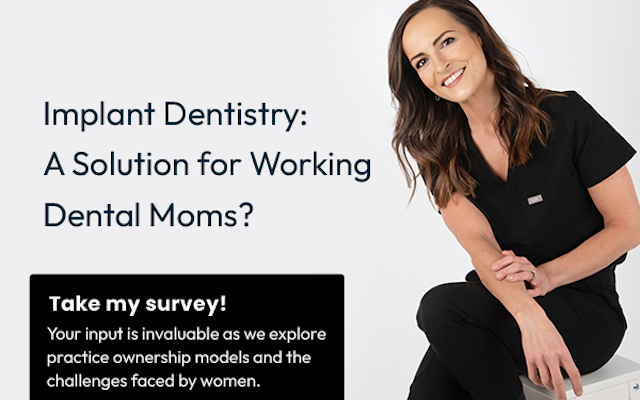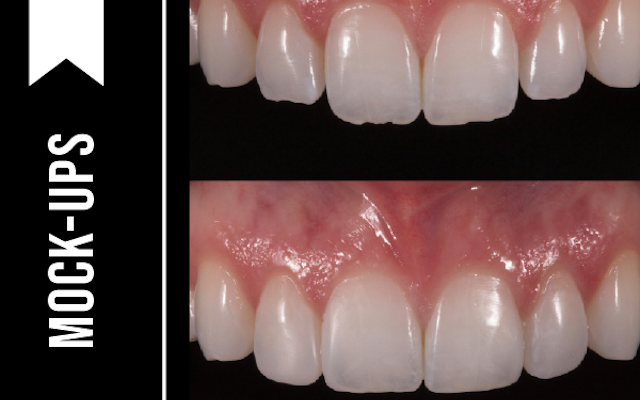Integrated treatment planning is complex. The first question is, what does integrated mean? Do we mean integrated to whole body health, integrated across the specialties of dentistry or integrated to a patient’s individual needs? The answer is all of the above. In essence, integrated treatment planning means moving away from single tooth dentistry toward a comprehensive care approach.
Communication skills are required to truly listen to patients and to present their options in language that’s easy to understand. When patients become overwhelmed, it’s difficult for them to make decisions. Many times, smile design and restorative treatment planning have layers of complexity. One treatment plan may require discussion about the aetiology of erosion, a periodontal problem, and a tooth with failing endo, while the patient’s main concern is appearance—which may have nothing to do with the health issues that need addressed.
Ultimately, treatment planning is a series of decisions, and therefore a series of choices.
Choice Management
In the book “Choice Theory,” author William Glasser outlines how we make choices to satisfy one or more of our five basic needs:
Survival (For our purposes this is dental pain. If a patient is in pain, there is no point in trying to educate or have discussions about esthetics as the patient is in survival mode.)
Love and Belonging
Power
Freedom
Fun
Points two and three can factor into the choices that patients may make to improve their smile, self-confidence, self-esteem and to feel like they belong socially.
Depending on a patient’s pre-existing condition and the difference between the starting and desired endpoint, those decisions and choices can be simple, like going forward with tooth whitening to improve esthetics, or incredibly complex. The patient’s and the clinician’s own bias and personal experience will have as much of an impact on complex decisions as evidence-based protocols. Even simple cases should be considered in full to prevent missing a condition or risk factor that could be treated early if identified. An example of this is tooth wear. If identified early, it can be treated conservatively, with early intervention preventing more deterioration over the long term.1 How do we know if a patient will be simple or complex? By gathering the information and allowing ourselves time to consider what we find.
Begin With The End In Mind
If we design our journey correctly, we can use communication skills to identify the big picture vision for our patients. Taking values into account, this will help us determine priorities and ultimately develop a road map that outlines the treatment plan sequence from beginning to end. Pictures and visual aids, such as trial smiles or digital images, can help us work with patients to identify the desired outcome. Deciding on a treatment plan is much easier if we have a shared understanding of the goal and how to set priorities.
Treatment Planning is Decision-Making
There are seven steps to decision-making:
1. Identify the decision. What problem are we trying to solve? In dentistry, this requires combining the patient’s perceived problem with diagnostic data. It is worth clarifying our values and our patients’ values, keeping in mind esthetics does not come at the expense of health, well-being, comfort or predictability. Ethically, health is always the priority. Predictability is dependent on many variables and can be difficult to determine even with an evidence base. One patient may choose saving a tooth at all costs even with increased unpredictability, whereas another patient’s busy lifestyle may make predictability a key priority.
2. Gather the relevant information. This includes history and clinical exam. Consider the diagnoses.
3. Identify the alternatives. There is always more than one solution.
4. Weigh the evidence. Risks versus benefits, individual risk assessment.
5. Choose among the alternatives. We can use our expertise to guide patients while focusing on their values.
6. Take action. Do the dentistry!
7. Review the decision. This entails maintenance and risk management.
Patient Journey
Consider the patient’s journey through a dental practice to happen in stages. Doing so allows us to identify what events need to take place and determine how to tailor the journey to the individual patient and dentist. The goal is to get patients to say yes to the ideal treatment for both health and esthetics, whatever that might be for them.
Dentistry can be a highly stressful profession, but the more time we invest in the early planning stages to get everyone on the same page and to set realistic expectations, the more predictable the outcomes will be. No treatment or procedure is without risk, but if these risks are properly identified and managed, all parties are informed and prepared to meet the patient’s future needs.
Treatment Planning Protocol
To fit with the 7 stages of decision making, the dental treatment planning process can be considered in 5 sections:
1. Capture of all information. This includes the patient’s wants and desires and clinical data, photography, video and intraoral scans.
2. Analysis. Time taken for due consideration of all the information to come to a diagnosis and relevant observations related to risk factors.
3. Smile design integrated treatment planning options. Based on steps 1 and 2.
4. Case presentation and discussion. Valid consent for risks and benefits of treatment and of doing nothing. Identify the priorities.
5. Implementation of the agreed treatment plan. Use treatment sequencing for predictable results.
The Future
It will be interesting to see how the increasing use of artificial intelligence will shape the world of treatment planning. Currently, we still require our eyes and our thinking minds to work to define the big picture, capture the information, identify the priorities, take into account the risks and benefits of alternatives, and present all this to patients as a road map with easy to understand choices.
Investing time in capture, analysis and planning allows the clinician and the patient to communicate and work together toward a shared end-goal. When this happens, the implementation of the clinical dentistry is well planned and considered, which will set expectations, increase patient satisfaction and reduce stress.
References
1. Jackson, R. D. (2000). "Loss of cuspid guidance: a functional and aesthetic dilemma." Dent Today 19(7): 56-61.
 By:
By: 



